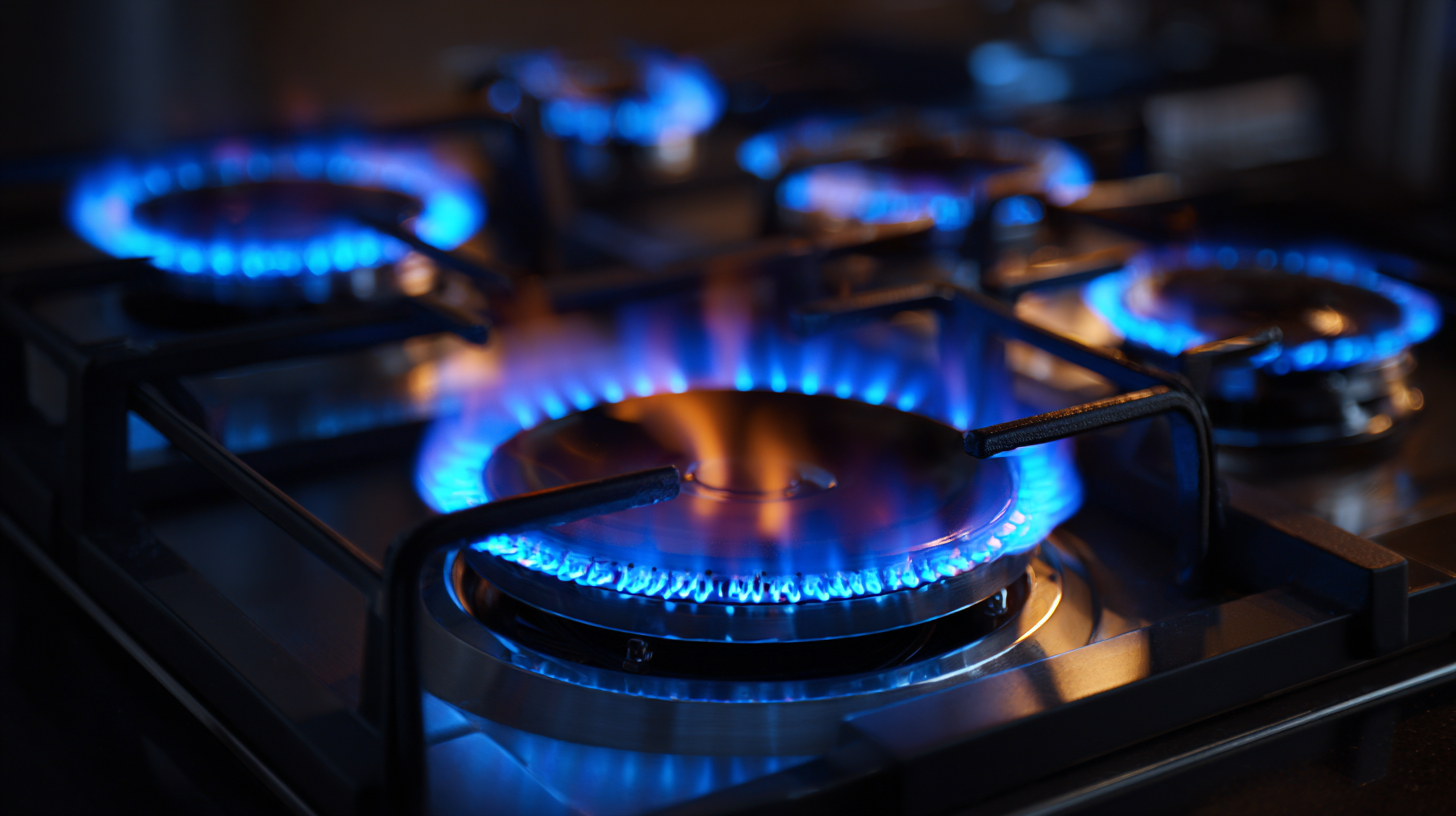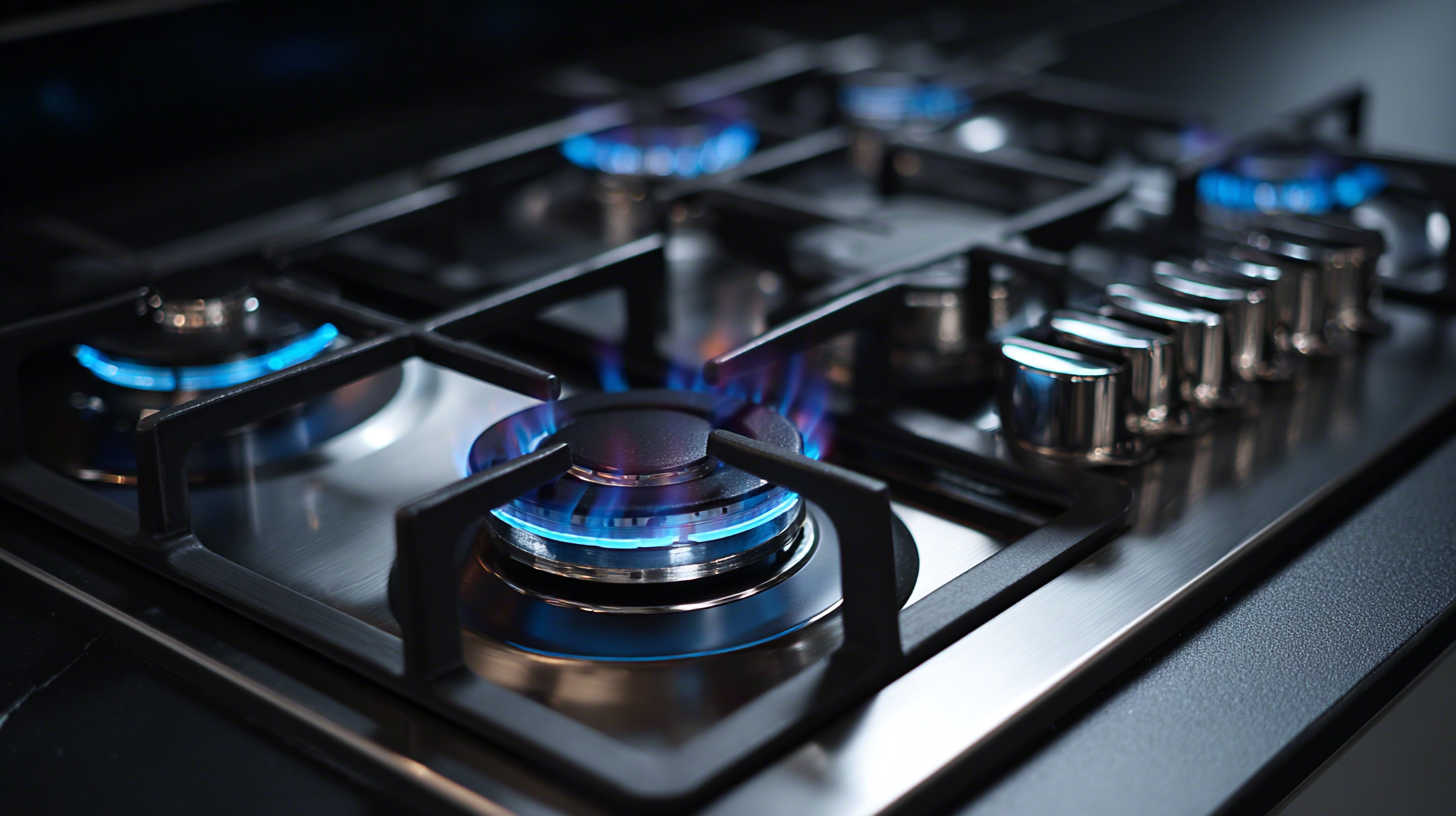
As the culinary landscape evolves, high efficiency gas stoves are becoming a centerpiece in modern kitchens, driven by increasing consumer demand for both performance and sustainability. According to a recent report by the International Energy Agency, gas stoves account for approximately 60% of the residential cooking market globally, with a notable uptick in energy-efficient models being favored by eco-conscious homeowners. Specifically, China gas stove manufacturers are leading the charge, showcasing innovation that combines advanced technology with superior designs. In fact, China's export of gas stoves reached over 10 million units in 2022, reflecting a robust growth trajectory and solidifying its status as a powerhouse in the global kitchen appliance market. This surge not only highlights the export strength of Chinese-made gas stoves but also signifies a shift towards embracing energy-efficient cooking solutions in households worldwide, setting the stage for a greener future in culinary practices.

The journey of gas stove efficiency has evolved significantly, with design innovations consistently pushing the boundaries of performance while focusing on sustainability. Historically, gas stoves have been a staple in kitchens, but recent advancements have shifted towards improved energy efficiency, benefiting both consumers and the environment. The integration of energy-efficient technologies, such as polymeric gas separation membranes, illustrates a future where gas stoves contribute to a more sustainable cooking solution.
Tips: When choosing a gas stove for your kitchen, consider models with higher energy efficiency ratings. This not only reduces energy consumption but also enhances cooking performance. Additionally, look for features that promote even heat distribution, which can lead to quicker cooking times and less wasted energy.
As we contemplate the next phase in gas stove design, the focus will undoubtedly lie in balancing efficiency with user experience. The emergence of smart technologies combined with traditional gas stoves is yet another exciting development, providing greater control over cooking settings and energy usage. Opting for advanced gas stove varieties can significantly reduce your carbon footprint while elevating your culinary capabilities.
Tips: Stay informed about technological developments in gas stoves to find models that offer both efficiency and advanced features. Regular maintenance can also ensure your stove operates at peak efficiency, prolonging its lifespan and optimizing performance.
High efficiency gas stoves have emerged as essential appliances in modern kitchens, providing not only superior cooking performance but also significant cost savings on utility bills. According to the Energy Information Administration, traditional gas stoves typically lose 20-30% of their energy to heat waste. However, high efficiency models are designed to maximize heat transfer to cookware, improving energy efficiency by up to 50%. This reduction in wasted energy directly translates into lower gas bills, potentially saving households hundreds of dollars annually.
To further enhance energy savings, consider these tips: first, ensure that pots and pans have flat bottoms to maximize contact with the burner. This allows for better heat distribution and leads to faster cooking times. Second, utilize the right burner size for your cookware; a small pot on a large burner generates excess heat, wasting energy. Additionally, using lids during cooking can trap heat, reducing the overall cooking time and energy consumption.
As modern kitchens evolve, incorporating high efficiency gas stoves is not just a trend but a smart investment in sustainability and cost efficiency. According to a report by the American Gas Association, switching to high efficiency appliances can reduce greenhouse gas emissions by over 30% over their lifespan, making them an environmentally friendly choice as well.
This chart illustrates the potential energy savings provided by high efficiency gas stoves compared to conventional models, highlighting their impact on utility bills over a year.
As modern kitchens evolve, the focus on sustainability and reducing environmental impact has become more critical than ever. High efficiency gas stoves are at the forefront of this movement, offering a cleaner and more eco-friendly alternative to traditional cooking methods. With advancements in technology, these stoves are designed to optimize gas combustion, resulting in lower emissions of harmful pollutants. This shift not only benefits the environment but also contributes to improved indoor air quality, creating a healthier cooking space for families.

Additionally, sustainable cooking practices are increasingly being embraced alongside high efficiency gas stoves. Chefs and home cooks alike are adopting techniques that minimize energy use and waste. For instance, using the right-sized pots and pans can enhance heat retention, allowing for quicker cooking times and reduced gas consumption. Moreover, by prioritizing local and seasonal ingredients, consumers can decrease their carbon footprint further. As we push toward greener kitchen solutions, high efficiency gas stoves emerge as a vital component in cultivating a responsible approach to cooking that honors both the environment and culinary art.
The landscape of modern kitchens is evolving, pushing the boundaries of energy efficiency and culinary performance. Advanced technologies are significantly improving the efficiency of gas stoves, making them not only eco-friendlier but also more convenient for everyday cooking. According to a report by the American Gas Association, new gas stove models can achieve up to 98% thermal efficiency, which means that nearly all the gas used is converted to useful heat for cooking. This improvement reduces energy consumption while enhancing cooking performance.
As manufacturers innovate, features such as smart technology integration are becoming commonplace. Connectivity allows users to monitor and adjust their stove settings remotely, optimizing energy use based on cooking schedules. Moreover, advancements in burner design, such as dual-flame burners, provide precise heat control, catering to both simmering and high-heat cooking needs.
Tips: To maximize the efficiency of your gas stove, consider using flat-bottomed cookware that matches the burner size. This ensures even heat distribution and reduces cooking times. Additionally, regular maintenance of burners can improve efficiency; cleaning the burners regularly prevents gas blockages and ensures optimal performance.
As modern kitchens evolve to meet the demands of sustainability and efficiency, high efficiency gas stoves are witnessing a notable rise in consumer adoption. This trend is fueled by growing awareness around climate change and energy efficiency, prompting many households to swap out traditional appliances for more advanced options. Consumers are not just looking for cooking performance; they want appliances that align with their values, driving interest toward high efficiency models that offer reduced emissions and lower energy consumption.
The global market for cooking appliances is expected to expand significantly, with innovations in design and functionality catering to the environmentally conscious consumer. Enhanced technologies in heat management and improved burner designs are making these gas stoves not only more efficient but also compatible with the latest kitchen aesthetics. As consumers prioritize sustainability, the accelerating trend of adopting high efficiency gas appliances may turn out to be a critical element in the broader movement toward greener living in the upcoming years.
